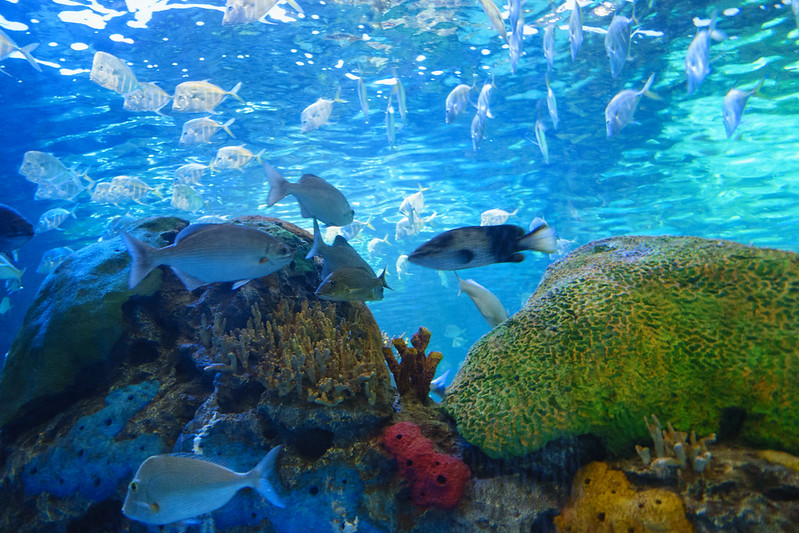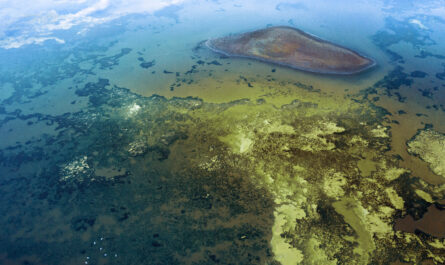The Pacific Ocean is not only the largest and deepest ocean on Earth but also home to some of the most enigmatic and fascinating ecosystems. Its deep trenches, such as the Mariana Trench, Tonga Trench, and Kermadec Trench, hold secrets of life that have intrigued scientists and explorers for centuries. These extreme environments, often characterized by crushing pressures, near-freezing temperatures, and perpetual darkness, host an array of remarkable species adapted to thrive against all odds.
This article delves into the extraordinary life in the Pacific Ocean’s trenches, exploring the adaptations, ecosystems, and discoveries that make the deep sea one of the final frontiers of scientific exploration.
1. The Unique Environment of Pacific Ocean Trenches
Defining Ocean Trenches
Ocean trenches are long, narrow depressions in the sea floor, formed by subduction zones where one tectonic plate slides beneath another. The Pacific Ocean is home to the majority of the world’s trenches, with the Mariana Trench being the deepest at nearly 36,000 feet (11,000 meters).
Extreme Conditions
Life in these trenches faces challenges unparalleled anywhere else on Earth:
- High Pressure: Pressure increases by 1 atmosphere every 10 meters, reaching over 1,000 atmospheres in the deepest parts of the Mariana Trench.
- Low Temperatures: Despite being geothermally active, most trench environments hover near freezing, between 1-4°C (34-39°F).
- Complete Darkness: Sunlight cannot penetrate beyond 1,000 meters, leaving trenches in perpetual darkness.
- Nutrient Scarcity: Food sources are scarce, often relying on marine snow (organic matter descending from upper layers) or hydrothermal vent ecosystems.
Geological Features
These trenches are dotted with hydrothermal vents, cold seeps, and mud volcanoes, each hosting unique microbial and macro-species ecosystems.
2. Adaptations of Deep-Sea Species
The creatures inhabiting Pacific trenches have evolved extraordinary adaptations to survive in these extreme conditions.
Pressure Resistance
- Soft Bodies: Many deep-sea species, like jellyfish and certain octopuses, lack rigid skeletons, allowing them to withstand intense pressure.
- Biochemical Adaptations: High concentrations of piezolytes and unsaturated fats in cell membranes prevent structural collapse under high pressure.
Survival in Darkness
- Bioluminescence: Organisms like anglerfish and vampire squid produce their own light through chemical reactions. This helps in attracting prey, deterring predators, or communication.
- Enhanced Sensory Organs: Species like grenadiers and tripod fish rely on heightened tactile and chemical senses instead of vision.
Energy Efficiency
- Slow Metabolism: Creatures such as amphipods and snailfish have adapted to low-energy lifestyles, conserving resources.
- Symbiotic Relationships: Some species, like tube worms near hydrothermal vents, rely on symbiotic bacteria that convert chemicals like hydrogen sulfide into energy.
3. Key Species of the Pacific Trenches
The Pacific Ocean trenches host a range of species, some discovered only recently due to advancements in deep-sea exploration.
Snailfish
- Found at depths of over 8,000 meters, these gelatinous fish are among the deepest-dwelling vertebrates.
- Adapted to high pressure, they have flexible bones and produce antifreeze proteins to survive near-freezing temperatures.
Amphipods
- These crustaceans dominate the trench ecosystems, feeding on organic debris and carcasses.
- They exhibit remarkable pressure tolerance, with some species discovered in depths beyond 10,000 meters.
Giant Tube Worms
- Found near hydrothermal vents, these worms host symbiotic bacteria that convert vent chemicals into energy, bypassing the need for sunlight-based photosynthesis.
Dumbo Octopus
- Named for its ear-like fins resembling Disney’s Dumbo, this octopus thrives at depths exceeding 4,000 meters.
- Its soft, flexible body allows it to adapt to extreme pressure.
Xenophyophores
- Single-celled organisms that form large, intricate structures on the seafloor.
- They play a significant role in nutrient cycling in deep-sea ecosystems.
4. Ecosystems in Pacific Trenches
The ecosystems in Pacific trenches are as varied as they are extreme, relying on unique energy sources to sustain life.
Hydrothermal Vents
- These underwater geysers emit hot, mineral-rich water, supporting communities of bacteria, tube worms, and shrimp.
- Chemoautotrophic Life: Microorganisms near vents use chemicals like hydrogen sulfide as energy sources, forming the base of the food chain.
Cold Seeps
- Areas where methane and hydrogen sulfide seep from the seafloor create unique habitats for mussels, clams, and microbial mats.
- Cold seeps are crucial for understanding carbon cycling in deep oceans.
Whale Falls
- When whale carcasses sink to the seafloor, they become localized ecosystems, sustaining species like hagfish, sleeper sharks, and specialized bone-eating worms (Osedax).
Marine Snow
- Organic debris sinking from the ocean surface provides a vital food source for trench-dwelling species.
- This steady “snowfall” includes dead plankton, fecal matter, and detritus from upper layers.
5. Discoveries and Exploration
Technological Advancements
The exploration of Pacific trenches has accelerated with innovations in deep-sea technology:
- ROVs (Remotely Operated Vehicles): Machines like Deepsea Challenger and Nereus allow scientists to study trenches without risking human lives.
- Submersibles: Crewed vessels, such as the Trieste and DSV Limiting Factor, have reached the Challenger Deep, the deepest point in the Mariana Trench.
- Sonar Mapping: High-resolution sonar systems reveal detailed topographies of trench environments.
Notable Discoveries
- Mariana Trench Expedition (2014): Discovered snailfish thriving at record-breaking depths.
- Tonga Trench Research: Unearthed amphipods with unique enzymes capable of digesting plastic.
- Hydrothermal Vent Communities: Unveiled new species of crabs, shrimp, and bacteria adapted to extreme conditions.
6. Challenges and Threats
Despite their remoteness, Pacific trenches are not immune to human impacts.
Plastic Pollution
- Microplastics have been found in amphipods and other trench-dwelling organisms, showcasing the far-reaching effects of pollution.
Deep-Sea Mining
- Efforts to extract valuable minerals from the seafloor threaten fragile trench ecosystems.
Climate Change
- Ocean acidification and warming waters may alter deep-sea habitats, impacting species reliant on stable conditions.
7. The Importance of Protecting Pacific Trenches
Biodiversity Hotspots
Trenches harbor species found nowhere else on Earth, many of which remain undiscovered. Protecting these habitats is crucial for preserving global biodiversity.
Scientific Value
Studying trench ecosystems provides insights into evolution, biochemical adaptations, and potential medical applications, such as pressure-resistant enzymes.
Carbon Sequestration
Deep-sea ecosystems play a vital role in carbon cycling, mitigating the effects of climate change.
8. Future Directions in Research
International Collaboration
Efforts like the UN’s Decade of Ocean Science for Sustainable Development aim to promote deep-sea research and conservation.
Technological Innovations
Advances in AI, machine learning, and robotics promise to revolutionize trench exploration, uncovering new species and ecosystems.
Conservation Policies
Establishing marine protected areas (MPAs) around key trench regions is essential for safeguarding these unique habitats.
Conclusion
The Pacific Ocean trenches represent one of the most mysterious and biologically rich regions on our planet. Despite their inaccessibility, they are increasingly threatened by human activity. Understanding and protecting these habitats is not just a scientific endeavor but a moral imperative to preserve the wonders of the deep for future generations. As exploration continues, the secrets of the trenches will undoubtedly reveal new species, ecosystems, and insights into the resilience of life in Earth’s most extreme environments.



